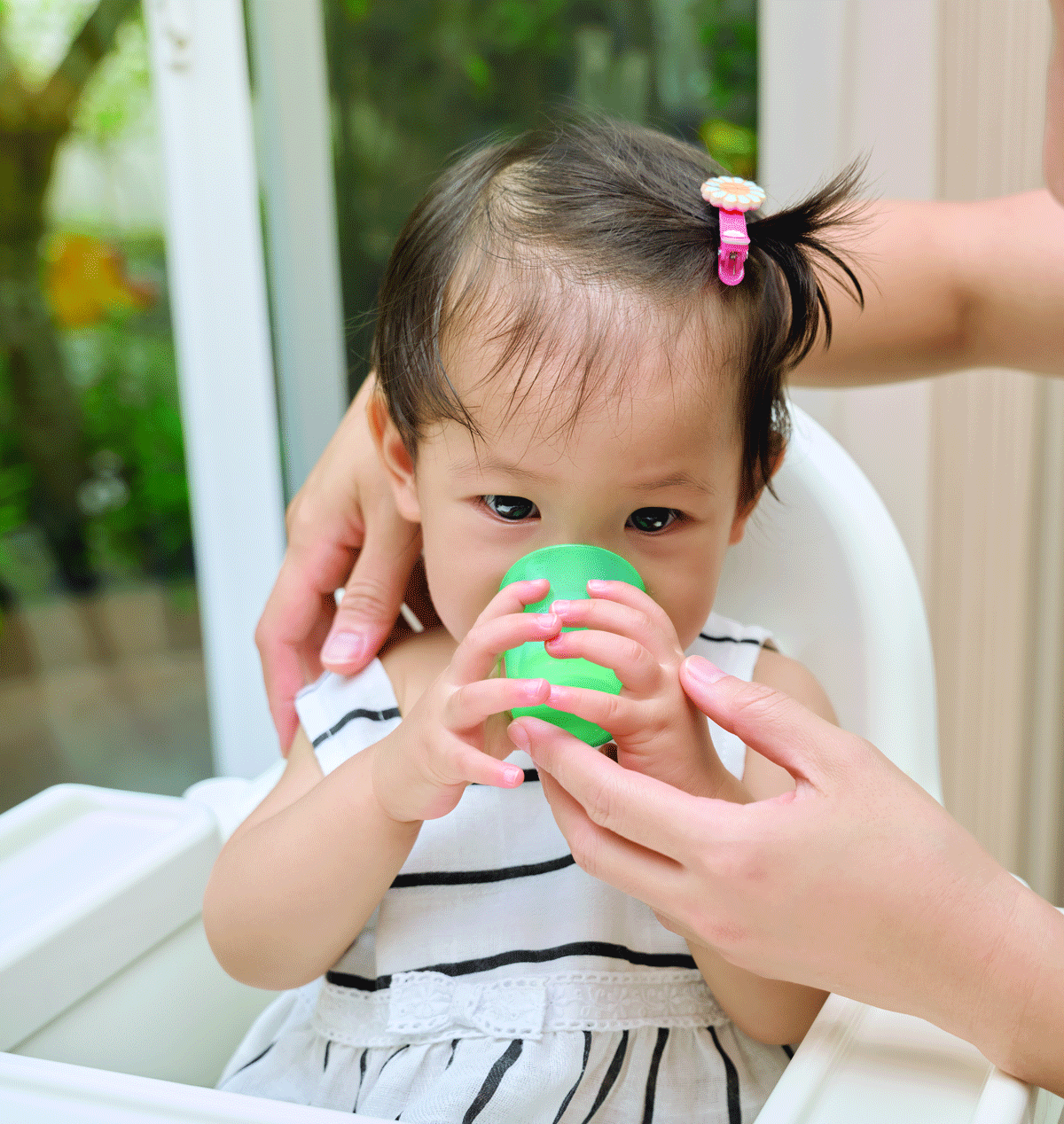
Choose a few steps for your routine. Keep it simple!


Do the same steps in the same order each time. It is important to be consistent.

Be patient! It will take time for your toddler to memorize the steps and create his new script.
As he goes through these same steps over and over, he will create a script. He will learn that these steps end with him staying at the daycare. Knowing what to expect may be all he needs to be calm as you are leaving.
Changing from a bottle to a cup can be frustrating. Toddlers often get upset when they expect a bottle but get a cup instead. A new routine can help.
Before you begin, you may want to move his high chair to a different place. You can also store the cups in a different place than the bottles.




After he sees the new routine several times, he will no longer expect the bottle. He will be more likely to take the cup without getting upset.

Your toddler sleeps more at night than she did when she was younger. Still, bedtime is not always easy. A relaxing bedtime routine can help her go to sleep and stay asleep.
Choose Simple Steps: Some of the things you already do can be part of your routine.
Be Consistent: Do the same steps in the same order every time.
Be Patient: Allow time for your toddler to learn the routine.
Tips to Remember:
BATH: Start her bedtime routine with a nice warm bath. Or, you can wash her face and brush her teeth. Keep things quiet and calm so she knows it is almost bedtime.


Sometimes, your toddler may wake up more often than you expect. Her sleep is still changing. At her age, waking is usually temporary. She is less likely to wake because she is hungry. Here are some tips to help her sleep better.
Tips to Remember:

Being excited and playing at bedtime can make it harder for her to go to sleep and to stay asleep. Use a routine to help her relax.

Give your toddler lots of practice with new skills during the day. When she masters the skill, she will not wake as often.

Flashing lights and sounds are very exciting to your toddler. Turn off screens and electronics with lights and sounds from the room where she sleeps.

Your toddler may wake more often when sleeping in a new or different place. It might help to keep familiar objects close by. You can use your bedtime routine, but she may wake up anyway. She will sleep longer when you get home or when she gets used to the new place.

Your toddler may wake more often when her routine changes. She will sleep longer again when she learns the new routine.

Your toddler will wake when she is sick or uncomfortable. She will sleep longer when she feels better. Check with your health care professional if you are worried.
Your toddler is learning to communicate better every day. She still cries, but less often than when she was younger. When she cries, she is telling you that she needs your help.
Toddlers cry for many reasons. They may cry when they:
As a parent, you want your toddler to be calm and happy. When she is crying, your toddler will need a little help to calm down. You can find the best ways to help her.
Here are some ways to help your toddler stay calm:

Respond to her quickly.
Between 18 months and 3 years, children sometimes have tantrums. Your toddler’s brain is still developing. When she is very upset, she cannot control her emotions. Once a tantrum starts, your toddler really cannot control herself. She will need your help to calm her down.
For most children, there are 2 types of tantrums:
Shorter Tantrums


Adapted with permission from California WIC and UC Davis Human Lactation Center:
Install this web app on your iPhone: tap ![]() and then Add to Home Screen.
and then Add to Home Screen.
Side-Lying Hold
This hold is useful when:
Cross-Cradle Hold
This hold is useful when:
Clutch or “Football” Hold
This hold is useful when:
Cradle Hold
This hold is useful when:
Laid-Back Hold
This hold is useful when: